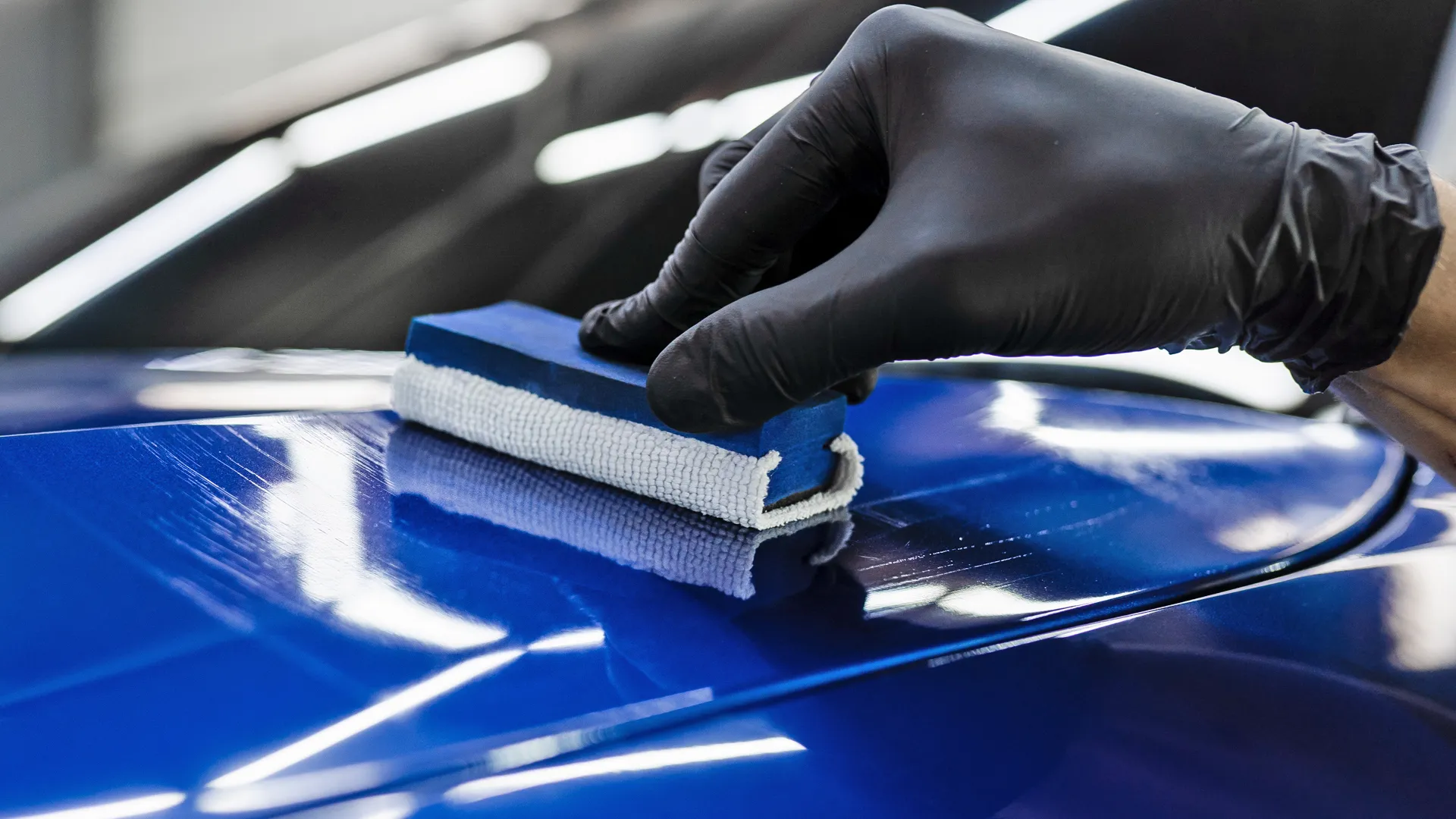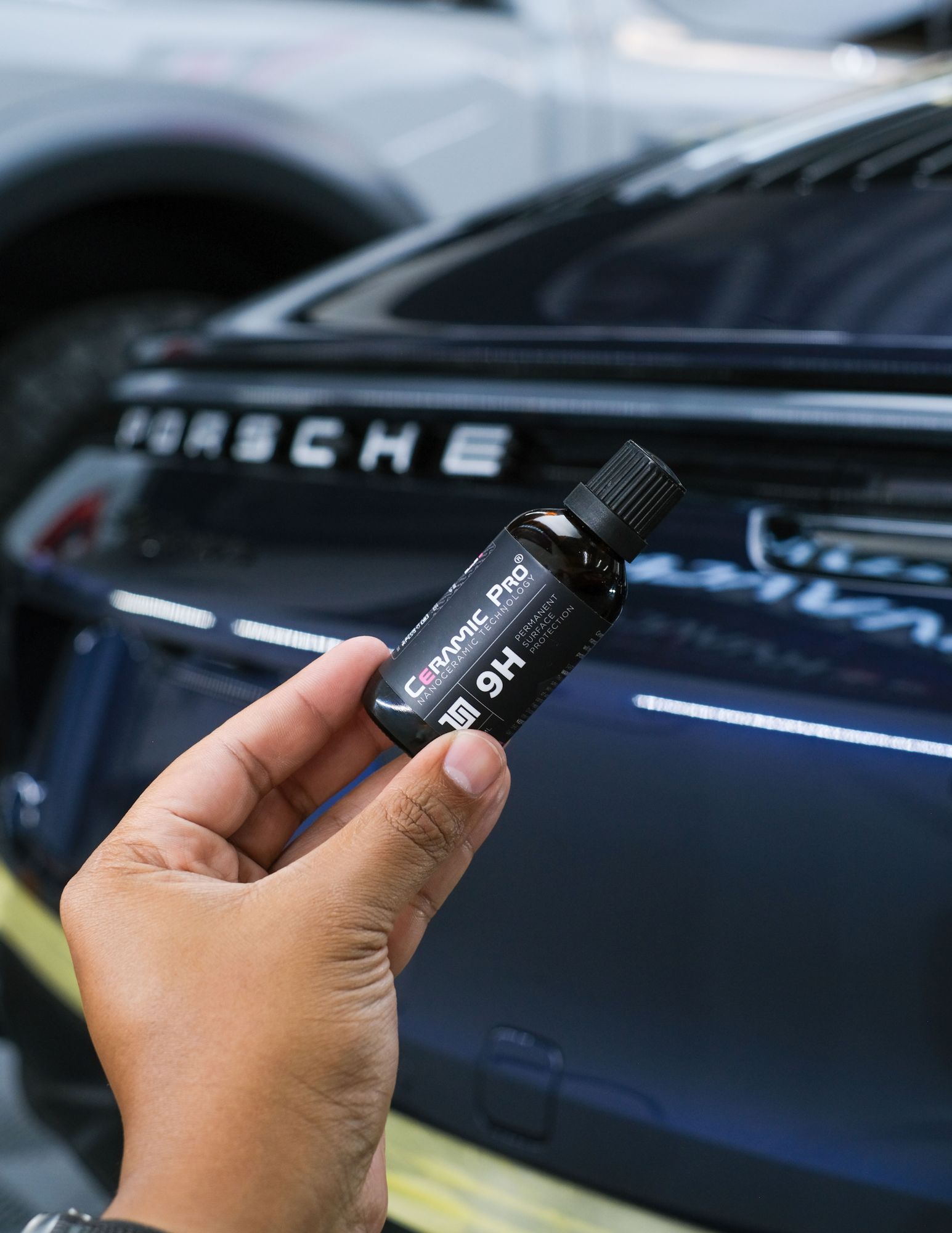Ceramic Coating vs. Standard Wax: Which Provides Much Better Long-Term Protection?
The dispute in between ceramic layers and traditional wax for lorry security has amassed considerable attention among automotive fanatics and professionals alike. Ceramic finishings flaunt superior longevity and resistance to environmental variables, yet the intricacy of their application elevates questions concerning access and functionality.
Introduction of Ceramic Covering
Ceramic covering has actually acquired substantial appeal among auto lovers and detailers alike as a result of its sophisticated protective top qualities. This innovative innovation is designed to produce a sturdy, hydrophobic guard over a car's paint surface area, substantially enhancing its resistance to ecological contaminants such as dust, UV rays, and chemical spots. Unlike traditional wax, which supplies a short-term layer of security, ceramic finishes bond at a molecular degree with the paint, offering durable sturdiness-- typically extending past two years with appropriate maintenance.
The application process involves thorough preparation of the car's surface area, consisting of cleansing and brightening to guarantee optimal attachment. Once applied, the covering treatments to form a robust layer that not only includes deepness and gloss to the paint however likewise streamlines maintenance. With its hydrophobic homes, ceramic finishing permits water and dust to slide off even more conveniently, decreasing the frequency of cleans and reducing the danger of swirl marks.
Additionally, ceramic coatings are readily available in numerous formulas, permitting customers to pick products tailored to their details requirements and choices. In general, ceramic covering stands for a substantial innovation in paint protection innovation, providing exceptional performance compared to conventional choices.
Introduction of Typical Wax
Commonly considered a staple in auto treatment, wax acts as a preferred selection for those looking for a simple approach to enhance and protect their car's paint - ceramic coating. Automotive wax normally consists of all-natural components, such as carnauba, or synthetic substances, developed to create a safety layer on the surface area of the paint. This layer not only improves the automobile's gloss and radiate but additionally provides an obstacle against environmental contaminants
The application of wax is usually easy to use, making it available for both specialists and DIY enthusiasts. When applied, wax needs a curing duration, after which it sets to create a protective shell.
However, while wax works for enhancing the visual allure of a vehicle, it is very important to note that the defense it uses might demand extra regular reapplication compared to different products, such as ceramic layers. Overall, conventional wax continues to be a popular alternative for those focusing on convenience of usage and instant aesthetic renovation.
Resilience and Longevity Comparison
While both ceramic layers and traditional wax deal safety benefits for automobile paint, their longevity and longevity vary significantly. Conventional wax, usually made from natural carnauba or artificial polymers, usually offers a protective layer that lasts about three to six months. This fairly short life expectancy requires routine reapplication to maintain optimal defense.
On the other hand, ceramic finishings are crafted from innovative nanotechnology, creating a covalent bond with the paint surface. This results in a durable, hydrophobic layer that can sustain for two to 5 years, depending on the item and ecological conditions. The remarkable durability of ceramic layers is credited to their chemical framework, which offers enhanced resistance to scratches, UV rays, and oxidation.

Protection Versus Environmental Variables
Protecting a vehicle's paint from environmental factors is essential for preserving its appearance and value in time. Autos are regularly exposed their website to a variety of components, consisting of UV rays, bird droppings, tree sap, acid rain, and roadway grime, every one of which can compromise the honesty of the paintwork.
Ceramic finishings supply a robust defense against these ecological aggressors. Unlike traditional wax, which can weaken quickly under UV direct exposure, ceramic coverings develop a durable, hydrophobic layer that stands up to the harmful impacts of sunshine and toxic wastes. This advanced technology produces a chemical bond with the vehicle's surface, using superior defense that lasts for years, even in harsh problems.
In comparison, ceramic coatings maintain their safety qualities much longer, dramatically lowering the danger of paint damages and guaranteeing that the lorry preserves its aesthetic charm. As an outcome, ceramic coverings are progressively recognized as the remarkable choice for long-term defense versus ecological aspects.
Application and Upkeep Distinctions
The techniques of application and subsequent maintenance for ceramic coatings and standard wax differ considerably, affecting the overall user experience and performance of each item. Ceramic layers need an even more elaborate application procedure, usually entailing surface area preparation that includes washing, sanitizing, and polishing the lorry. When the surface is ready, the ceramic covering is used in a controlled environment, commonly requiring expert knowledge to make sure appropriate healing and bonding to the paint.

While both products improve car appearance, the longer-lasting protection offered by ceramic coatings may warrant their preliminary financial investment, in spite of the even more demanding application process. On the other hand, conventional wax remains a prominent option for those looking for a simpler, albeit short-term, remedy.

Verdict
In conclusion, ceramic finishes demonstrate considerable benefits over typical wax in terms of toughness and ecological protection. With a lifespan prolonging two to five years and superior resistance to UV rays, dust, and chemical discolorations, ceramic layers provide a much more reliable service for lasting car maintenance. Although the application procedure might call for specialist proficiency, the resulting price financial savings and lowered frequency of reapplication emphasize the worth of ceramic finishings for those seeking ideal lorry defense.
The argument between ceramic finishings and standard wax for automobile defense has garnered considerable interest amongst automobile lovers and specialists alike. Unlike standard wax, which provides a short-term layer of defense, ceramic coatings bond at a molecular level with the paint, using resilient longevity-- typically extending beyond two years with proper upkeep.
While both ceramic finishings and standard wax offer protective benefits for vehicle paint, their longevity and long life vary dramatically. For auto fanatics seeking long-lasting defense, ceramic finishes provide a compelling benefit over standard wax products.
In final thought, ceramic coatings demonstrate substantial advantages over conventional wax in terms of longevity and ecological defense.